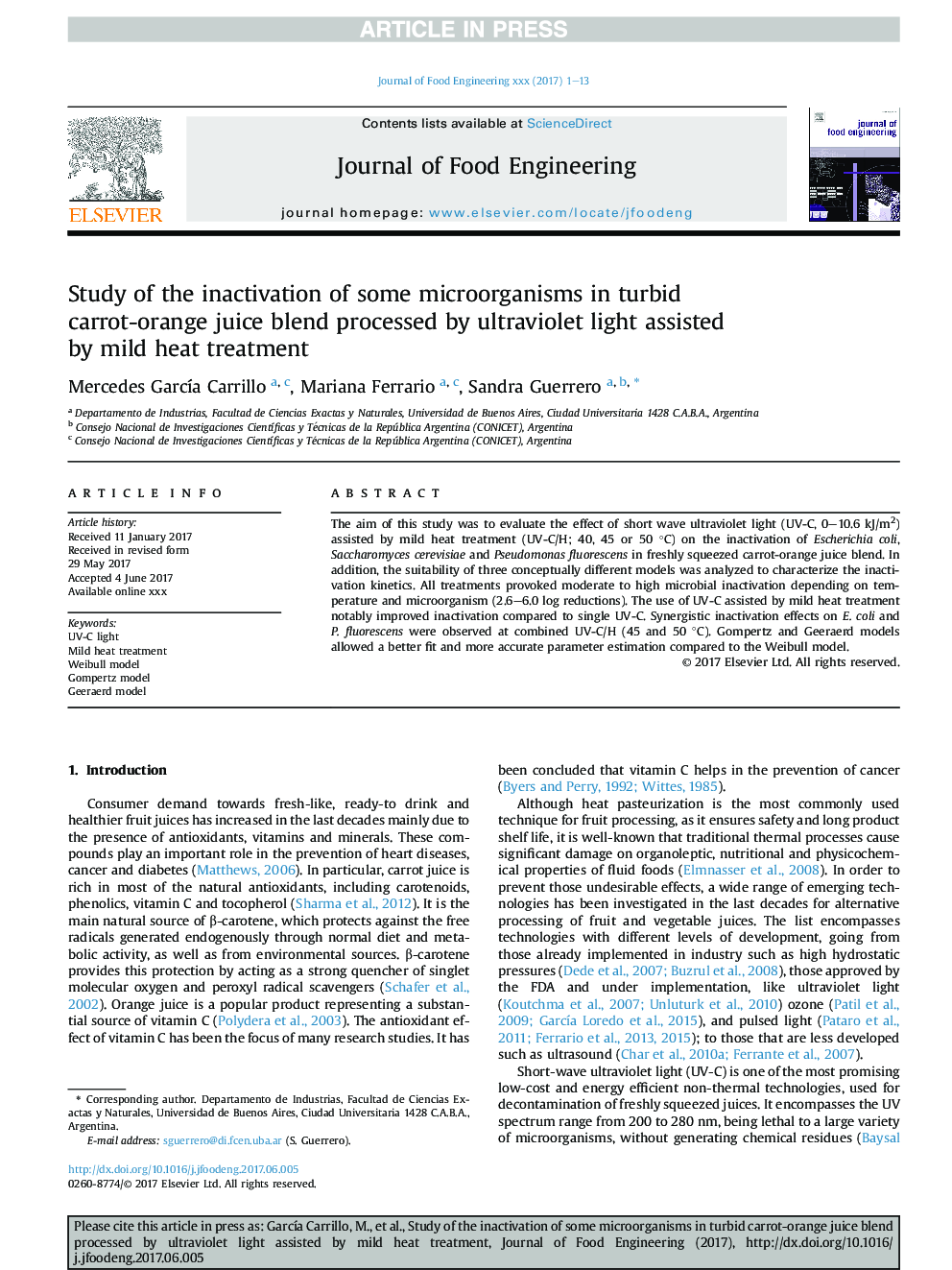| Article ID | Journal | Published Year | Pages | File Type |
|---|---|---|---|---|
| 4908813 | Journal of Food Engineering | 2017 | 13 Pages |
Abstract
The aim of this study was to evaluate the effect of short wave ultraviolet light (UV-C, 0-10.6 kJ/m2) assisted by mild heat treatment (UV-C/H; 40, 45 or 50 °C) on the inactivation of Escherichia coli, Saccharomyces cerevisiae and Pseudomonas fluorescens in freshly squeezed carrot-orange juice blend. In addition, the suitability of three conceptually different models was analyzed to characterize the inactivation kinetics. All treatments provoked moderate to high microbial inactivation depending on temperature and microorganism (2.6-6.0 log reductions). The use of UV-C assisted by mild heat treatment notably improved inactivation compared to single UV-C. Synergistic inactivation effects on E. coli and P. fluorescens were observed at combined UV-C/H (45 and 50 °C). Gompertz and Geeraerd models allowed a better fit and more accurate parameter estimation compared to the Weibull model.
Related Topics
Physical Sciences and Engineering
Chemical Engineering
Chemical Engineering (General)
Authors
Mercedes GarcÃa Carrillo, Mariana Ferrario, Sandra Guerrero,
